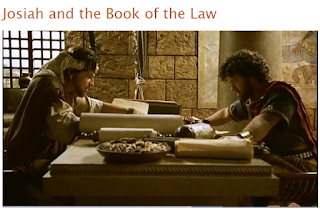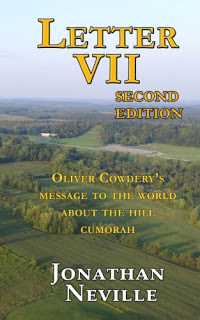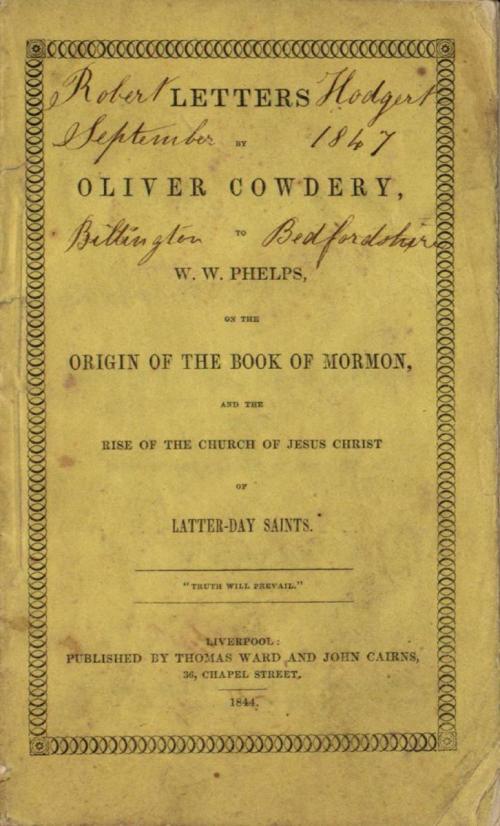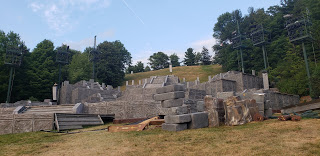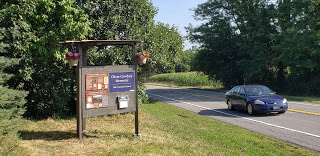The illusion of "research" among M2C intellectuals
https://youtu.be/5r9cYJffSTo
Second, I posted a new item on the Fairly Mormon blog, here:
https://fairlymormon.blogspot.com/2018/08/the-mothers-of-invention-new-cumorah.html
_____
Today, I want to discuss the illusion of “research.”
Most people think their opinions are based on common sense. But really, the idea of “common sense” is nothing but a rationalization after the fact; i.e., after you make your decision, you attribute it to “common sense.”*
Here’s how you can test for this. If two people disagree about something, ask them which one has common sense.
They will both say they do.
_____
You might object that there are known facts about which people cannot disagree, such as the freezing temperature of water (under a given set of circumstances).
A topic that has no emotional element is an exception to the common sense rule. Your everyday decisions, such as how much lunch to pack, is based on your experience and expectations. You don’t pack an entire roasted chicken for lunch because you know you couldn’t eat it all. That’s actual common sense.
Everything else that we think is common sense involves emotional variables that overwhelm our sense of reason and facts. Psychologically, confirmation bias acts as a filter to exclude facts and rational arguments that contradict our beliefs so that we actually think our opinions are common sense.
_____
For this reason, people are delusional when they think they are “doing their own research” before making up their minds on a topic. Doing research entails following someone else’s rabbit trail.*
Recently, a young M2C scholar attempted to persuade people to disbelieve President Cowdery’s Letter VII because it declares that it is a fact that the final battles of the Jaredites and Nephites took place in the mile-wide valley west of the Hill Cumorah in New York.
He knows that every prophet who has addressed the topic has affirmed the New York Cumorah, but he disagrees because he’s done “research” and anyway, it’s just common sense that Cumorah cannot be in New York.
So how does he persuade people to repudiate the prophets?
Simply by telling them to read “research” published by others who repudiate the prophets.
Anyone who takes that advice and thinks they have done their research is delusional.
Your pre-existing opinion–your bias–is telling you to follow the path set out by the M2C scholars. You think this is the “best” approach because you’re gathering information, and these are the “best” sources because they teach for BYU or CES, or they’re employed by the Church, or your friends and family admire them.
But all you are doing is confirming your bias.
“You actually think you’re looking at the “best” information and ignoring the “bad” information, but right there is the problem. If it’s your opinion which information is bad or good, so you are not being influenced by the information; instead, you are using the information to reinforce your bias.”*
Many people delude themselves into thinking something such as this: “I know some people are sheep, but not me. I do my own research.”
Anyone who thinks like this is even more delusional because they are in complete denial. An exception would be a person who actually does original research and actually changes his/her opinion as a result. None of the M2C intellectuals has changed their opinion because M2C is what they were taught beginning at a young age.
_____
If M2C scholars were serious, they would encourage people to do at least three things:
1. Read what the prophets have taught about Cumorah in New York, along with all the science that corroborates the New York Cumorah and the work of those who support the New York Cumorah.
2. Read the M2C literature that seeks to repudiate the prophets.
3. Compare the two approaches side-by-side.
But they’ll never do that.
As this young M2C scholar did, they want people to do step 2 only.
_____
The best examples of delusional scholarship I know of is the M2C citation cartel.
They believe their research always confirms their biases because their biases are “true.”
The citation cartel actually believes that they do “peer review” when they send articles around dto like-minded scholars.
The citation cartel includes FairMormon, Book of Mormon Central, the Interpreter, BYU Studies, Meridian Magazine, etc. All of them insist on M2C and refuse to consider, let alone publish, concepts of Book of Mormon geography and Church history that support what the prophets have taught about the New York Cumorah.
I encourage you to read their publications and see for yourself.
_____
*h/t to Scott Adams at https://www.pscp.tv/w/1eaKbVLgDmQKX
Source: Book of Mormon Wars


